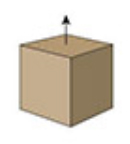
-
Toggle Search Menu
-
Toggle My Account Menu
Login
Don’t have an account? Sign up now
-
Toggle Shopping Cart Menu
| Growth Process |
Typical Growth Morphology |
Photo Example of Rough |
| Natural |
 Shape:
Shape:Octahedron Growth: 8 directions |

|
| High Pressure, High Temperature (HPHT) |
 Shape:
Shape:Cuboctohedron Growth: 14 directions |

|
| Chemical Vapor Deposition (CVD) |
 Shape:
Shape:Cube Growth: 1 direction |

|